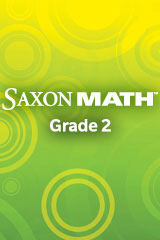Learning by Doing with L2 Students

“There is a general assumption by researchers and educators that learning after performing an action creates better memory of the action, as compared to reading about it, hearing about it, or observing someone else performing it" (George, 2021). Task-based language education (TBLT), as a means for learners to practice language via actual life tasks, was created in order to incorporate enactment to the language classroom. Many studies have demonstrated that allowing L2 students to plan before speaking or writing resulted in substantial improvements in fluency and complexity. Planning time will be helpful because otherwise, if a task becomes more complicated, form would no longer be a priority for the L2-speaker and accuracy will be abandoned to focus on meaning. “There are two types of planning that can be used by the L2 learner, pretask planning and on-line planning.” Pretask planning enables people before they do the task to practice or prepare anything. Online planning is the procedure in which speakers attend the wording stage attentively during speech preparation and follow up their speech actions in pre-production and post-production (George, 2021).
“The study outlined in this article aims to tackle the question of whether or not combining learning by doing with on-line planning has a positive effect during communicative pressure situations” (George, 2021). Fulfilling academic tasks that simulates a real-life scenario gives L2 learners a secure environment to practice and prepare pre-tasks, because they are typically categorized under second-language learning. Learning by doing showed that action and recognition improve memory. Oral online planing has been demonstrated to enhance the correctness and complexity of the spoken language. Pretask planning has also been found to enhance fluency (George, 2021).
If students practice a task before the test, they will increase syntactic complexity, accuracy and fluency with no given area disadvantaged. Accuracy can be neglected if L2 learners give priority to meaning rather than form when new grammar is taught, their concentration is limited or they are in a stressful setting. It should thus be no surprise that students can work with better coherent ideas when they have an opportunity of planning before a task. Practice group participants scored more in fluency than online planning and no planning groups. They discovered that they could prioritize their knowledge of the photos, arrange their stories and prepare their contents before they had to write and, in doing way, could concentrate on the form in their written period. Second language learners would have the opportunity to perform a task as part of a normal lesson and then be evaluated at a later time on the same topic (George, 2021).

I agree that learning by doing is a method that is successful. It works for all kinds of students, I believe. Practicing in every way will enable a student to succeed before a test. My students mostly have hands-on learning as an accommodation in their IEPs. I teach Saxon Math at the moment. Students gain abilities and confidence via everyday review opportunities, mathematical thinking, and knowledge application. Engaging manipulatives and hands-on learning tools help my students develop and demonstrate understanding. It is a program that introduces a skill, has students explore that skill, and then has the students complete a worksheet on that skill. It is completely learning by doing. In these initial days of school, my students made greater improvement than with our previous mathematical program. Saxon enables children to repeat abilities continuously and to break down concepts. My students often struggle with testing. Normally I will do sample problems before a test so they know what to expect.This encourages them to take more time to concentrate on their skills. I believe that L2 students will fit into my routines perfectly. The simple breakdown and hands on interactions will help them be successful.
Reference:
George, A. (2021, September 29). Is Planning Key to Task-Based Learning? Language Magazine. https://www.languagemagazine.com/2021/09/30/is-planning-key-to-task-based-learning/


Comments
Post a Comment